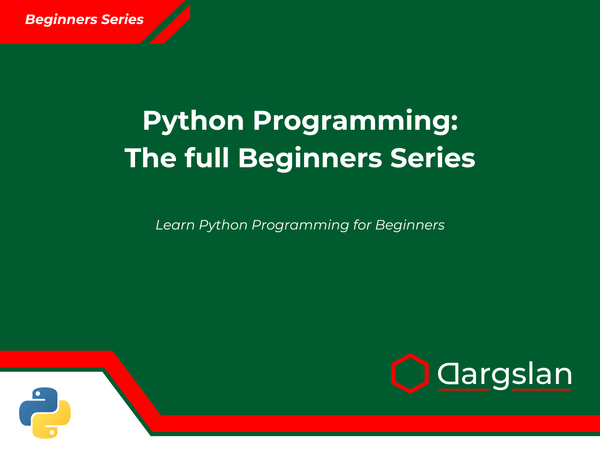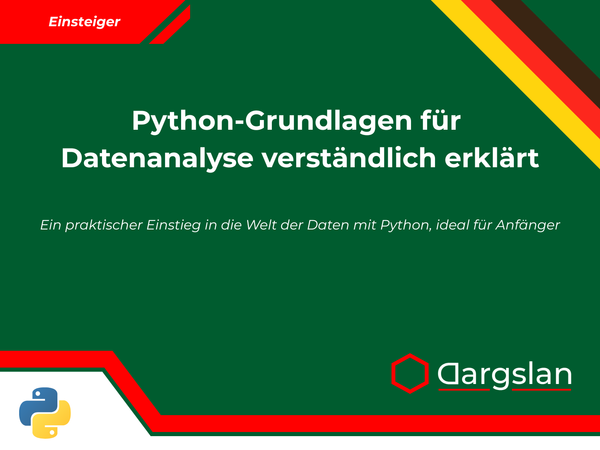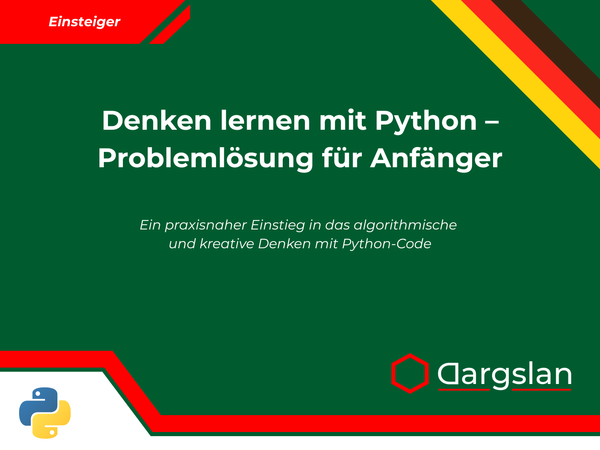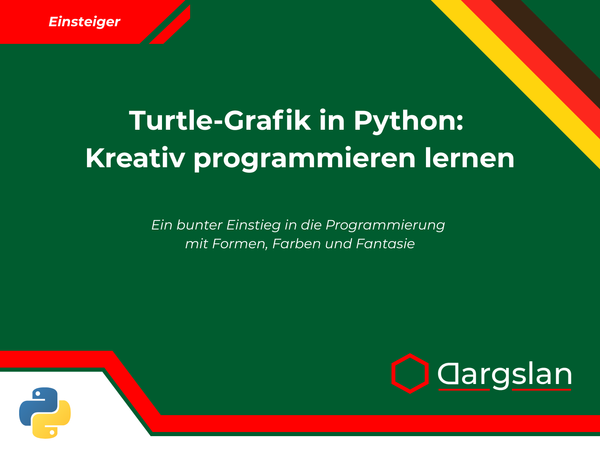Book Review: Python for Kids and Teenagers: Start Coding Now!
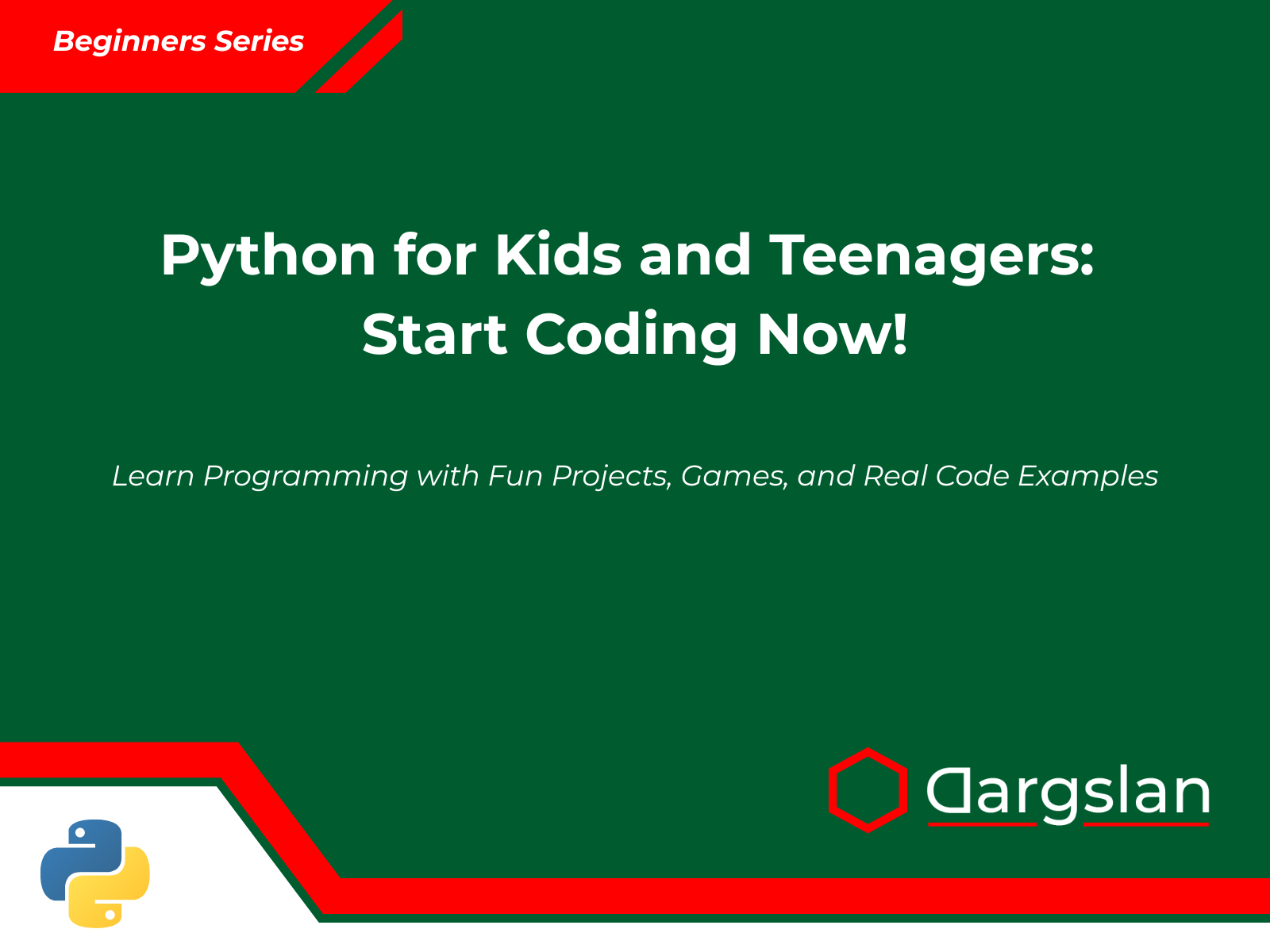

Python for Kids and Teenagers: Start Coding Now!
Learn Programming with Fun Projects, Games, and Real Code Examples
Python for Kids and Teenagers: Start Coding Now! - A Comprehensive Guide to Beginning Programming
Introduction: Why Python Is the Perfect First Programming Language for Young Minds
In today's digital world, coding has become an essential skill for future success. "Python for Kids and Teenagers: Start Coding Now!" by Dargslan offers a friendly, engaging introduction to programming that transforms complex concepts into accessible lessons specifically designed for young learners aged 8-18.
Python stands out as the ideal first programming language because of its clean syntax, readability, and versatility. Unlike other programming languages with complicated rules and symbols, Python reads almost like English, making it approachable for beginners while still being powerful enough to build real-world applications, games, and more.
This book brilliantly bridges the gap between young curious minds and the world of programming through carefully structured lessons, fun projects, and real-world applications that resonate with today's youth.
Who Will Benefit from This Book?
"Python for Kids and Teenagers" is perfect for:
- Complete beginners with no prior coding experience
- Children and teenagers between 8-18 years old
- Visual and hands-on learners who thrive on practical examples
- Parents looking to introduce their children to valuable tech skills
- Educators seeking structured material for teaching programming
- Anyone wanting to learn Python through engaging, age-appropriate content
The only prerequisites are basic computer operation skills and elementary math concepts—everything else is taught step by step with clear explanations.
What Makes This Book Special?
Learning by Doing: The Practical Approach
Unlike many programming books that focus heavily on theory, "Python for Kids and Teenagers" emphasizes hands-on learning. Every concept introduced is immediately reinforced through practical exercises and creative projects that young coders can relate to and enjoy.
Age-Appropriate Examples and Language
The examples, projects, and explanations are specifically created with young minds in mind. References to games, social media, school projects, and other relevant contexts make programming concepts immediately relatable and engaging.
Visual Learning Support
Abundant illustrations, code visualizations, and color-coded examples support visual learners and make abstract concepts concrete. This visual approach helps young readers grasp programming concepts more intuitively.
Progressive Skill Building
The book follows a carefully structured learning sequence where each concept builds upon previous knowledge. This scaffolded approach prevents overwhelm and creates a smooth learning curve for beginners.
Cross-Curricular Connections
Programming concepts are connected to math, science, art, and other school subjects, showing the relevance of coding across different disciplines and reinforcing learning in multiple areas.
Comprehensive Chapter Breakdown
Chapter 1: What Is Coding and Why Learn Python?
The journey begins with a friendly introduction to programming fundamentals, explaining:
- What programming actually means in simple terms
- How computers interpret and execute instructions
- Why Python stands out as an excellent first language
- Real-world applications of Python that kids can relate to
- How coding develops problem-solving skills applicable to all areas of life
This foundational chapter builds excitement while setting realistic expectations about the learning process ahead.
Chapter 2: Getting Started with Python
The practical journey begins with illustrated instructions for:
- Installing Python on different operating systems (Windows, Mac, Linux)
- Setting up and navigating the Python environment
- Understanding the Python interpreter
- Writing and running your first "Hello World" program
- Using the IDLE development environment effectively
A robust troubleshooting section anticipates common installation problems and provides kid-friendly solutions.
Chapter 3: Talking to the Computer with Input and Output
Communication fundamentals come alive through:
- Creating interactive programs using
input()functions - Displaying information with
print()statements - Understanding different data types (strings, numbers)
- Formatting output to look professional
- Building user-friendly program interfaces
Fun projects include creating a personalized greeting program and a simple calculator that immediately apply these new skills.
Chapter 4: Making Decisions with if Statements
Decision-making in programming becomes intuitive through:
- Understanding boolean logic (True/False statements)
- Creating conditional statements with if, elif, and else
- Working with comparison operators (>, <, ==, etc.)
- Combining conditions with logical operators (and, or, not)
- Building programs that make choices based on user input
Young readers implement these concepts by creating programs like an age-appropriate game finder, a weather clothing advisor, and other decision-based applications.
Chapter 5: Repeating Things with Loops
The power of automation unfolds as readers explore:
- For loops for repeating code a specific number of times
- While loops for condition-based repetition
- Nested loops for creating complex patterns
- Loop control statements (break, continue)
- Real-world applications of loops in everyday programming
Projects include creating digital art with repeated patterns, building countdown timers, and programming simple animations that demonstrate how loops save time and reduce code duplication.
Chapter 6: Working with Variables and Data
This chapter deepens understanding of data manipulation through:
- Variable naming conventions and best practices
- Data types in detail (integers, floats, strings, booleans)
- Converting between different data types
- Mathematical operations and formulas
- String manipulation techniques for text processing
Practical exercises include building a temperature converter, creating a tip calculator, and programming word games that reinforce string concepts.
Chapter 7: Lists, Tuples, and Cool Collections
Data organization becomes intuitive through:
- Creating and manipulating lists of information
- Understanding when to use tuples instead of lists
- Using dictionaries for key-value pair storage
- List comprehensions introduced in kid-friendly ways
- Applying different collection types to solve various problems
Young coders apply these concepts by creating a digital diary, programming a simple inventory system for a game, and building interactive quiz applications.
Chapter 8: Creating Your Own Functions
Code reusability and modular programming are taught through:
- Defining and calling custom functions
- Working with parameters and arguments
- Return values and how to use them
- Understanding variable scope
- Building libraries of useful functions for future projects
Projects include creating a customizable greeting card generator, building math helper tools, and developing simple encryption functions.
Chapter 9: Drawing with Python (Turtle Module)
Visual programming brings a new dimension to learning:
- Introduction to the Turtle graphics module
- Drawing shapes, patterns, and colorful designs
- Creating animated sequences step by step
- Responding to user input in graphical programs
- Building interactive drawing applications
This highly engaging chapter has readers creating digital art, programming animations, and even building a basic drawing application that friends can use.
Chapter 10: Making Simple Games
The pinnacle of engagement comes with game development:
- Game design fundamentals explained simply
- User interaction in gaming environments
- Managing game states and player progress
- Simple graphics and animation techniques
- Implementing game logic and rules
Young programmers implement complete projects like number guessing games, rock-paper-scissors, simplified versions of classic games like Snake, and text-based adventure games with multiple paths.
Chapter 11: Debugging and Fixing Your Code
Essential troubleshooting skills are developed through:
- Understanding common error types and messages
- Systematic debugging techniques
- Using print statements for problem detection
- Implementing try-except blocks for error handling
- Testing strategies to verify program correctness
Rather than presenting debugging as a frustrating chore, the book frames it as detective work, with readers solving "code mysteries" and fixing intentionally broken programs.
Chapter 12: What's Next? Keep Learning!
The learning journey continues beyond the book with:
- Suggestions for intermediate Python topics to explore next
- Recommended resources for continued learning
- Ideas for ambitious projects that combine multiple skills
- Introduction to specialized Python applications (web development, data science, AI)
- Building a personalized learning roadmap based on specific interests
This forward-looking chapter ensures that momentum continues by providing clear next steps tailored to different interests.
Valuable Appendices for Reference and Extension
Python Cheat Sheet for Beginners
A quick-reference guide summarizing key Python syntax, functions, and concepts—perfect for refreshing knowledge during projects.
Fun Coding Challenge Ideas
50+ creative programming challenges organized by difficulty level, providing months of additional practice opportunities that reinforce and extend the book's concepts.
Glossary of Programming Terms
An illustrated glossary that defines programming terminology in kid-friendly language, building a solid technical vocabulary that will serve young coders well as they advance.
Useful Resources for Young Coders
Carefully curated links to websites, communities, competitions, and tools specifically selected for young Python enthusiasts who want to connect with the broader coding community.
Educational Benefits Beyond Coding
While Python programming is the primary focus, the book cultivates numerous additional skills:
Computational Thinking
The structured problem-solving approach taught throughout the book transfers to other subjects and real-world challenges.
Mathematical Reasoning
Concepts like variables, functions, and algorithms reinforce mathematical thinking and make abstract math concepts concrete through practical application.
Attention to Detail
Debugging activities develop meticulous attention to detail and analytical thinking necessary for many academic pursuits.
Digital Literacy
Beyond coding, readers develop broader technology competencies and understanding of how digital systems work.
Creative Expression
Many projects emphasize creative applications of technology, showing that coding is as much an art as it is a science.
Persistence and Resilience
The iterative nature of programming teaches young readers to persevere through challenges and learn from mistakes—valuable life skills that extend far beyond coding.
Learning Approach: Making Programming Accessible and Fun
The pedagogical approach reflects contemporary understanding of how young people learn most effectively:
Narrative-Based Learning
Many concepts are introduced through short stories or scenarios that provide context and make abstract programming ideas concrete and relatable.
Incremental Challenge
Exercises and projects gradually increase in complexity, maintaining the perfect balance between challenge and achievability to keep young readers engaged.
Multiple Learning Modalities
Information is presented in various formats—text explanations, code examples, illustrations, analogies, and projects—accommodating different learning styles.
Mistake-Positive Approach
The book normalizes errors as part of the learning process, with dedicated sections that help readers learn from typical beginner mistakes rather than becoming discouraged by them.
Parent and Educator Support
A special section provides guidance for adults supporting young coders:
Creating an Effective Learning Environment
Tips for setting up a distraction-free coding space and establishing productive learning routines.
When to Help vs. When to Step Back
Guidelines for providing the right level of support without solving challenges for the young learner, promoting independence and problem-solving skills.
Group Learning Adaptations
Modifications for classroom or coding club environments, including pair programming suggestions and group project ideas.
Connecting Learning to Future Opportunities
Age-appropriate ways to discuss how Python skills relate to future academic and career possibilities in technology and beyond.
Technical Requirements
The book is designed to be accessible with minimal technical requirements:
- Any computer (Windows, Mac, or Linux) manufactured in the last decade
- 4GB RAM minimum (8GB recommended for smoother experience)
- 500MB free disk space for Python and example files
- Internet connection for initial setup and optional additional resources
- Python 3.6 or higher (free download, installation instructions included)
No expensive software or specialized hardware is needed, making the book accessible to families and schools on limited budgets.
Conclusion: Empowering the Next Generation of Coders
"Python for Kids and Teenagers: Start Coding Now!" is more than just a programming book—it's a gateway to digital literacy, computational thinking, and creative self-expression through technology. In a world where software touches every aspect of our lives, giving young people the ability to understand and create technology rather than merely consume it is an invaluable gift.
The book succeeds in making Python programming accessible without oversimplifying the content. It respects young learners' intelligence while acknowledging their unique learning needs. The result is a resource that grows with the reader, providing months or even years of learning material depending on pace and practice time.
Whether used for self-study, family learning projects, classroom instruction, or homeschool curriculum, this comprehensive guide delivers on its promise to make coding accessible, engaging, and educational for young minds. It's not just teaching a programming language—it's opening doors to future opportunities and empowering young people with skills that will serve them well in our increasingly digital world.
From writing their first "Hello World" program to creating their own games and applications, "Python for Kids and Teenagers" guides young coders on an exciting journey of discovery, creativity, and accomplishment. The programming skills they develop today could very well shape the technological innovations of tomorrow.
Start your child's coding adventure today with "Python for Kids and Teenagers: Start Coding Now!"—the perfect introduction to programming for the next generation of innovators.
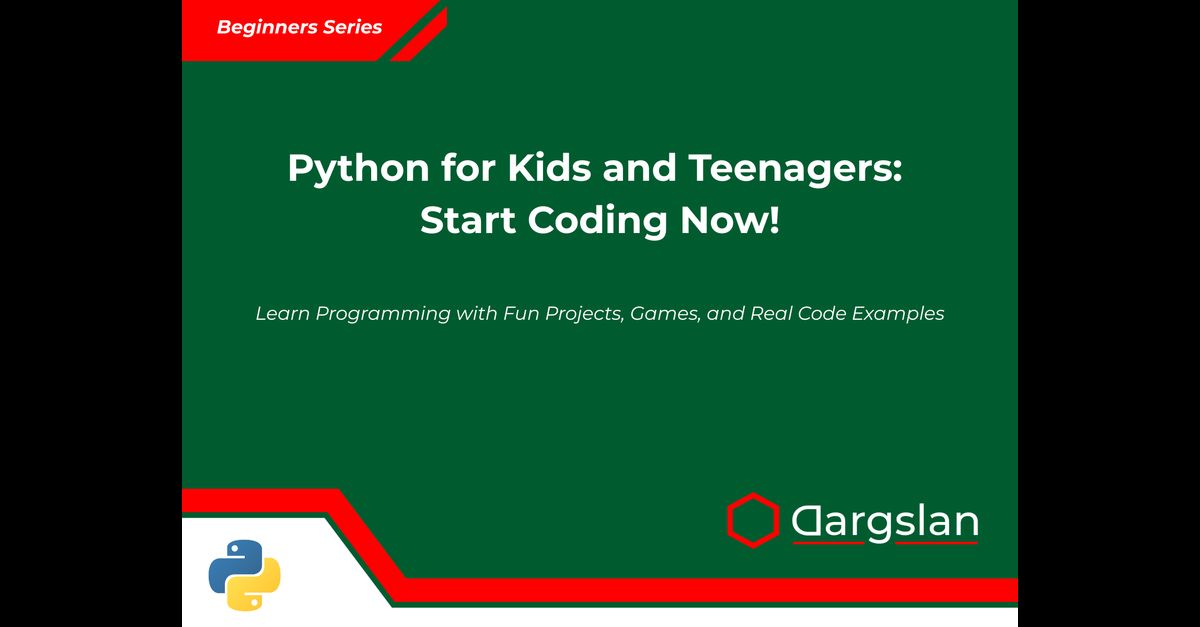
Python for Kids and Teenagers: Start Coding Now!



